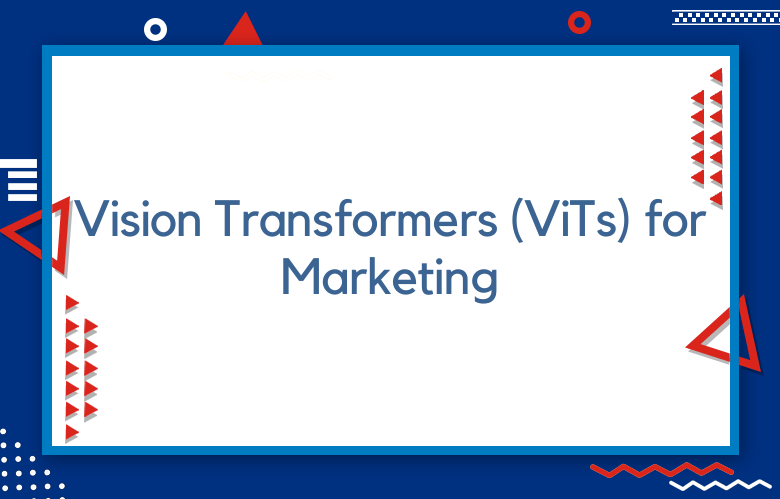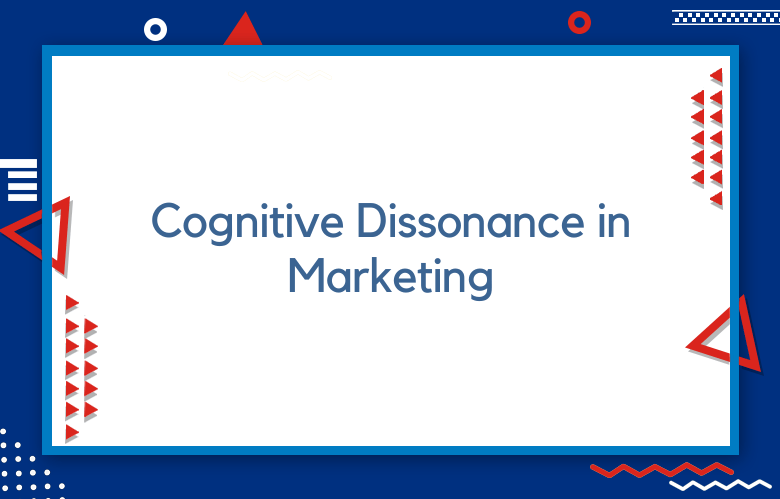Vision Transformers (ViTs) for Marketing

Marketing has always been about finding creative ways to promote products and services. But in this digital era where visual content has become a crucial part of advertising, marketers are rethinking their strategies to stay ahead.
This is where vision transformers, or ViTs, come into play. ViTs are a new type of deep learning algorithm revolutionizing how businesses approach marketing. In this article, we will explain what ViTs are, how they are used in marketing, and why they are the future of advertising.
Seeing Beyond: How Vision Transformers Revolutionize Marketing
In recent years, the marketing industry has witnessed a significant transformation, particularly with the emergence of Vision Transformers.
This technology has revolutionized marketing by enabling businesses to understand their target audience better and customize their advertising messages to suit individual needs.
Unlike traditional machine learning approaches, which focus on text and numerical data, vision transformers utilize computer vision to analyze images and videos to identify patterns and make predictions.
One of the critical benefits of vision transformers in marketing is that they help businesses better understand customer behavior and preferences through visual data analysis. With this information, companies can tailor their marketing strategies to suit the specific needs of their target market.
The Power of ViTs: Transforming Marketing Strategies
In today’s digital age, marketing strategies are evolving unprecedentedly. As businesses seek to stay competitive in a constantly changing online landscape, a new player has emerged to revolutionize visual marketing – Visual Information Technology, or ViT.
ViTs is a relatively new technology that utilizes artificial intelligence and machine learning algorithms to analyze vast amounts of visual content in real-time.
This allows businesses to gain valuable insights into consumer behavior and interest and optimize their marketing campaigns to deliver the desired results.
One of ViTs’ most significant advantages is their ability to provide more meaningful insights into visual content, such as image and video data, than traditional analytical tools.
With a ViT, businesses can quickly analyze massive amounts of visual data, including photos, videos, and other digital media, to identify patterns, trends, and preferences.
Digital Visionaries: Implementing ViTs in Marketing Campaigns
The world of business and marketing is constantly evolving. With the rise of advanced technology, companies continuously search for new and innovative ways to stay ahead of the curve.
This has led to a surge of interest in using Vision Transformers (ViTs) in marketing campaigns, with many digital visionaries recognizing the immense potential of this cutting-edge technology.
ViTs is a machine learning model that uses advanced neural networks to help identify and analyze visual patterns. This allows it to interpret and classify complex images quickly and accurately.
This makes them an ideal tool for marketers looking to utilize the power of visual content in their campaigns, as they can help identify critical visual elements and optimize them for maximum impact.
Vision Transformers: A Game-Changer for Marketing
In recent years, machine learning and deep learning technologies have revolutionized marketing strategies across various industries. One such technology that has become a game-changer in marketing is the Vision Transformer (ViT).
ViT is a neural network architecture specifically designed for image recognition tasks. It can process high-resolution images and extract meaningful visual features, making it a powerful tool for marketers who want to analyze and understand customer behavior.
By leveraging ViT, businesses can gain new insights into consumer preferences, demographics, and purchase patterns. This can help them tailor their marketing campaigns to target their audiences better.
Next-Level Insights: Leveraging ViTs in Marketing Analytics
Marketing analytics is crucial to any successful marketing campaign, and leveraging the latest technologies and methodologies is critical to driving relevant insights and delivering meaningful business outcomes. One such technology increasingly gaining prominence in marketing analytics is Vision Transformer models or ViTs.
ViTs are a class of neural network models incorporating a self-attention mechanism to process visual input data, such as images. They have been shown to outperform traditional convolutional neural networks (CNNs) in specific image recognition tasks and have thus attracted much attention from researchers and practitioners alike.
Unlocking Visual Data: Using ViTs to Decode Customer Behavior
Visual data holds immense business potential in understanding customer behavior and optimizing marketing strategies. With the advent of Vision Transformer models or ViTs, organizations can now efficiently decode visual data, providing insights into customer preferences, choices, and actions.
ViTs are deep learning models that utilize transformer architectures for image recognition, classification, and segmentation. They provide state-of-the-art performance, outpacing traditional convolutional neural networks, with significantly fewer computations.
This saves time and computational resources and effortlessly enables the processing of large datasets of visual data, such as images and videos.
From Pixels to Profit: Harnessing ViTs for Marketing Success
With digital marketing and e-commerce becoming increasingly crucial in today’s business landscape, companies constantly seek new and innovative approaches to boost their online presence and drive sales.
One recent development gaining traction in marketing is using Vision Transformer (ViT) technology. ViTs are cutting-edge artificial intelligence (AI) models that use visual input to perform complex tasks, such as identifying objects, recognizing faces, and generating natural language descriptions.
ViTs are particularly well-suited for marketing applications because they can analyze large amounts of visual data, including product images and videos, social media posts, and user-generated content, to identify patterns and trends that inform marketing strategies and campaign optimization.
Visualizing Success: The Impact of ViTs in Marketing
Visual information technology (ViT) integration has revolutionized how businesses approach marketing. With the increasing reliance on optical communication channels, ViTs offer a unique opportunity to enhance brand awareness and drive customer engagement.
Radiating vast benefits, companies have begun to embrace ViTs in their marketing strategies, recognizing their ability to drive business growth and uplift brand recognition.
The impact of ViTs in marketing has been immense, with studies highlighting the heightened emotional response and engagement that visual content elicits.
From static images to dynamic videos, ViTs offer a platform that allows for creative storytelling, making it easier for brands to connect with their target audience on a deeper level. ViTs provide a unique opportunity to evoke emotions, build brand loyalty, create brand ambassadors, and increase customer retention rates.
Visual Storytelling Redefined: ViTs in Marketing Content
Visual storytelling has long been a popular strategy in marketing, as it helps to engage audiences and communicate complex ideas in a concise and accessible way.
However, the emergence of Vision Transformers (ViTs) is redefining our approach to visual storytelling.
These advanced computer vision models can analyze and understand complex visual information in a previously unseen way in the industry, making them a powerful tool for creating marketing content that resonates with audiences.
ViTs break down an image into individual components, which are then analyzed and mapped to specific features within the image.
This allows the model to identify patterns and relationships between different objects and elements, which can be used to create a more targeted and impactful message. For example, a ViT could analyze an image of a product or service, identifying key features likely to interest consumers.
The Future of Marketing: Vision Transformers (ViTs)
When we talk about Artificial Intelligence, the first thing that comes to mind is Neural Networks. Neural Networks have transformed the AI world by allowing machines to learn and improve. However, new developments in Computer Vision AI using Transformers are gaining popularity.
Vision Transformers, or ViTs for short, are innovative applications that use an end-to-end process for image recognition tasks.
This new development significantly impacts marketing efforts. We’ll explore how ViTs can change the marketing landscape and how businesses can use this technology.
Conclusion:
ViTs are transforming the marketing landscape by enabling businesses to create more engaging and personalized customer experiences.
They are versatile, scalable, and have the potential to revolutionize the way advertising is done.
As ViTs become more sophisticated and widely adopted, we can expect them to push the boundaries of marketing and significantly impact how brands interact with their audiences. It’s an exciting time for marketers, and ViTs are at the forefront of this revolution.
Call: +91 9848321284
Email: [email protected]



